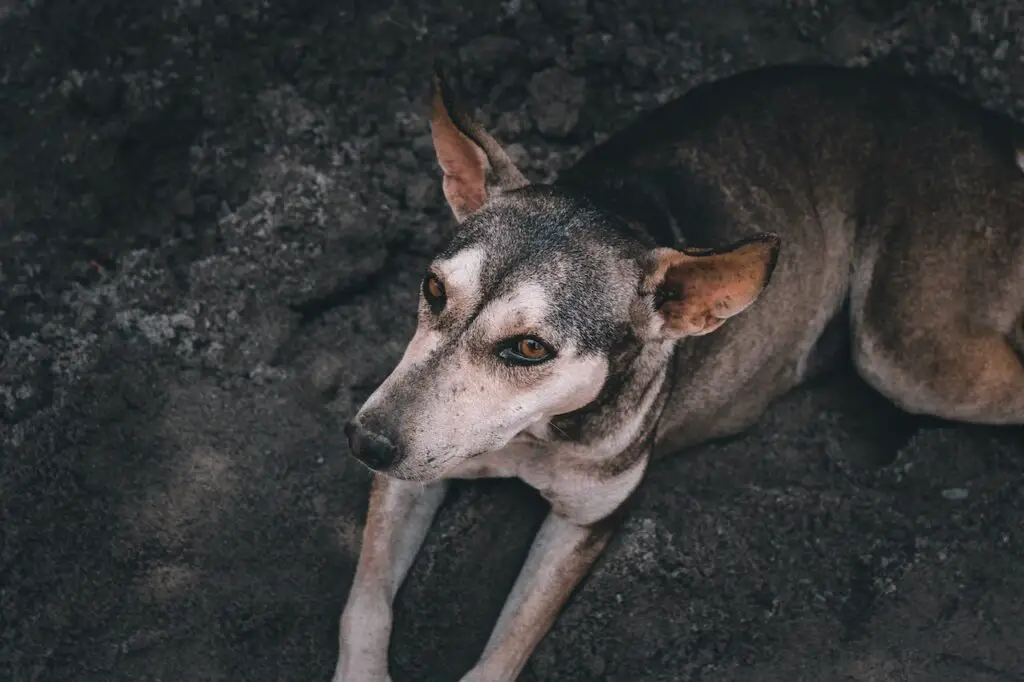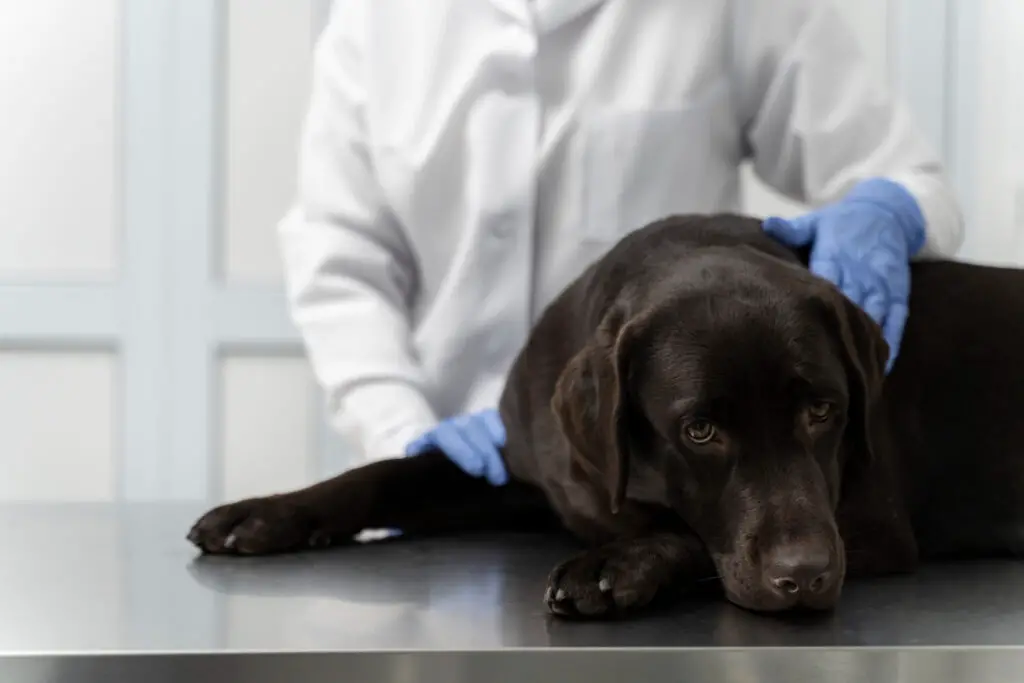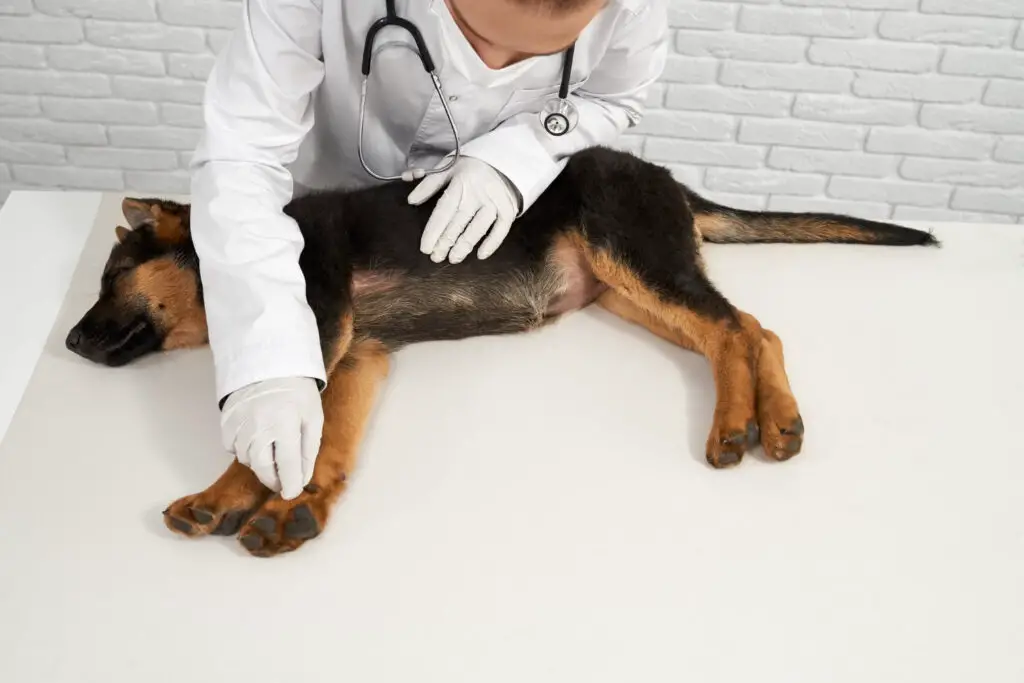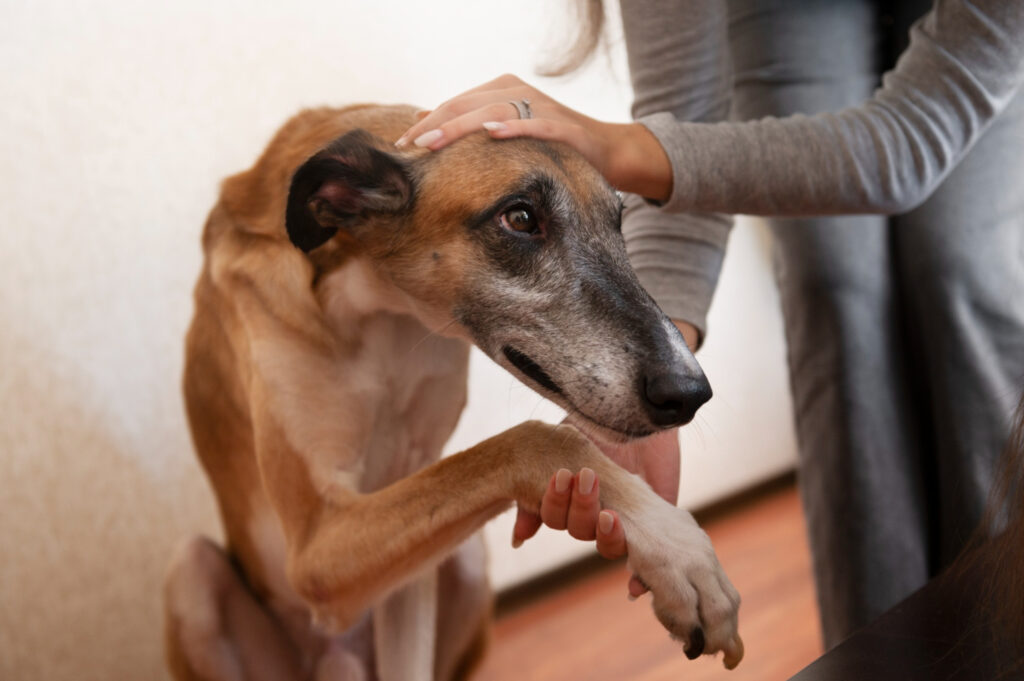Welcome to this comprehensive guide on how to effectively treat dog prolapse at home. As a responsible pet owner, it’s crucial to understand how to heal dog prolapse at home to ensure the well-being of your furry companion.
In this article, we will explore the various aspects of dog prolapse and provide you with valuable insights into home remedies that can aid in the healing process.
Remember, your dog’s health is of utmost importance, and with proper care and knowledge, you can ensure a better quality of life for your loyal companion.
What is Dog Prolapse?

Dog prolapse refers to the displacement or falling out of an organ or tissue from its usual position within the body. This condition can affect various body parts, such as the rectum, bladder, uterus, or even the eyelids.
For the purpose of this article, we will primarily focus on rectal prolapse, which is a common issue among dogs.
Causes of Dog Rectal Prolapse

Several factors can contribute to the development of rectal prolapse in dogs. Understanding these causes is essential in preventing future occurrences. Some of the common causes include:
1. Straining during Defecation
One of the leading causes of rectal prolapse is frequent straining during bowel movements. This strain puts pressure on the rectal tissues, leading to their protrusion outside the anus.
2. Intestinal Parasites
Parasitic infestations, such as worms, can irritate the intestinal lining, leading to inflammation and prolapse.
3. Chronic Constipation or Diarrhea
Persistent constipation or diarrhea can weaken the rectal muscles and increase the risk of prolapse.
4. Trauma or Injury
Accidents or injuries around the anal area can result in rectal prolapse.
5. Underlying Medical Conditions
Certain medical conditions like inflammatory bowel disease can make dogs more susceptible to prolapse.
Types of Prolapse in Dogs

Certainly! In addition to rectal prolapse, there are other types of prolapse that can occur in dogs. Let’s explore them below:
1. Uterine Prolapse
Uterine prolapse involves the protrusion of the uterus through the vaginal opening. This condition is more common in unspayed female dogs, especially during and after giving birth. Uterine prolapse requires immediate veterinary attention to prevent complications and ensure the well-being of the dog.
2. Bladder Prolapse
Bladder prolapse, also known as cystic prolapse, occurs when the urinary bladder protrudes through the urethral opening. This condition can be caused by straining during urination or underlying medical issues affecting the bladder muscles.
Prompt veterinary care is necessary to address bladder prolapse and prevent further complications.
3. Eyelid Prolapse (Cherry Eye)
Eyelid prolapse, commonly known as “cherry eye,” affects the third eyelid of dogs. The gland within the third eyelid becomes inflamed and protrudes, causing a red or swollen appearance.
Cherry eye can be uncomfortable for the dog and may require surgical intervention to reposition the gland and prevent chronic irritation.
It’s essential to remember that all types of prolapse in dogs should be taken seriously and promptly addressed by a veterinarian. Early detection and appropriate treatment can make a significant difference in the prognosis and quality of life for your furry companion.
Symptoms of Dog Rectal Prolapse

Recognizing the symptoms of rectal prolapse early can facilitate prompt treatment. Here are some signs to look out for:
1. Visible Tissue outside the Anus
The most apparent symptom is the presence of red or pink tissue protruding from the dog’s anus.
2. Discomfort and Pain
Dogs with rectal prolapse may show signs of discomfort, pain, and irritation around the anal area.
3. Bleeding
Prolapsed tissue may bleed, leading to bloodstains in the dog’s stool or around the anus.
4. Difficulty in Defecation
Straining or difficulty in passing stool could be an indicator of rectal prolapse.
5. Changes in Appetite or Behavior
Prolapse-related discomfort may cause changes in a dog’s appetite and behavior.
Preventive Measures for Dog Rectal Prolapse

Preventing rectal prolapse involves adopting a proactive approach to your dog’s health and well-being. Here are some preventive measures you can take:
1. Balanced Diet
Ensure your dog’s diet is rich in fiber and provides the necessary nutrients to maintain healthy bowel movements.
2. Hydration
Adequate water intake helps in maintaining bowel regularity and preventing constipation.
3. Regular Exercise
Encourage regular exercise to keep your dog physically active and help regulate bowel movements.
4. Deworming
Regular deworming treatments can prevent parasitic infestations and reduce the risk of prolapse.
5. Prompt Medical Attention
If your dog experiences any gastrointestinal issues or discomfort, seek immediate veterinary attention.
Home Remedies for Dog Rectal Prolapse
While rectal prolapse requires professional veterinary care, some home remedies can complement the treatment process and alleviate discomfort. Remember to consult your veterinarian before trying any of these remedies:
1. Warm Compress
Applying a warm compress to the prolapsed area can help reduce inflammation and soothe discomfort.
2. Honey Application
Honey has natural antibacterial properties and can be applied topically to promote healing.
3. Aloe Vera Gel
Aloe vera gel can provide relief from irritation and promote tissue regeneration.
4. Herbal Supplements
Some herbal supplements, like slippery elm, may help in improving bowel health.
5. Epsom Salt Baths
An Epsom salt bath can aid in cleansing the area and promoting healing.
When to Seek Veterinary Care

While home remedies can be helpful, it’s essential to recognize situations where immediate veterinary care is necessary. Seek professional assistance if:
1. The Prolapse Persists
If the prolapse does not recede within a short period, professional treatment is required.
2. Severe Bleeding
Excessive bleeding from the prolapsed area warrants immediate medical attention.
3. Signs of Infection
If you notice signs of infection, such as foul odor or pus, consult a veterinarian.
4. Unmanageable Pain
Persistent pain that affects your dog’s daily activities requires prompt care.
5. Recurring Prolapse
If your dog experiences recurrent prolapse, a thorough examination is vital to identify underlying causes.
Conclusion
Caring for a dog with rectal prolapse requires vigilance, attention to detail, and timely action. By understanding the causes, symptoms, and preventive measures, you can significantly contribute to your pet’s well-being.
Remember that while home remedies can be supportive, professional veterinary care is crucial for an accurate diagnosis and appropriate treatment.
By following these guidelines and providing your furry friend with the best possible care, you can ensure a happy and healthy life for your beloved companion.
Remember, your dog’s health and happiness depend on your dedication and care. Stay informed, stay proactive, and cherish the precious moments you share with your four-legged friend.

